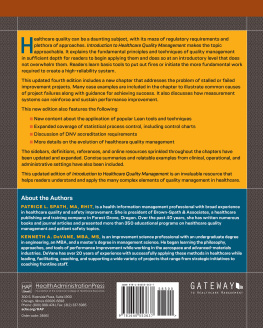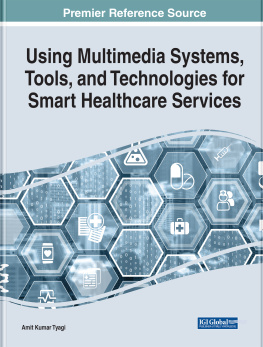Chapter 1
Socio-technical Design for the Care of People With Spinal Cord Injuries
Mark S. Ackerman, Aye G. Byktr, Pei-Yao Hung, Michelle A. Meade, and Mark W. Newman University of Michigan, Ann Arbor, MI, United States
Abstract
The Spinal Cord Injury Living and Learning System helps spinal cord injury (SCI) patients to acquire self-care skills through a clinician-managed virtual coaching program. It does this within a smart sensor-rich environment that helps monitor people with SCI and provides feedback to them, their caregivers, and clinicians. In this chapter, we discuss the basic design of the system, the requirements analysis and formative evaluation, and the technical lessons learned. We note the issues of sensor completeness and computational completeness in the technical design. We close with an analysis of what it means to design within a rapidly changing technical environment, one where the capabilities and constraints are unclear. The problem, as we discuss, is understanding how the social requirements and the unclear technical will join together over time, which we call the socio-technical trajectory problem in design.
Keywords
Care plans; Caregiving; Patient-clinician communication; Personalized health care; Pervasive environments; Self-care plans; Self-management plans; Sensor environments; Socio-technical design; Spinal cord injury patient tracking; Ubiquitious computing
1. Introduction
Spinal cord injury (SCI) is a difficult, complex, and chronic condition. Injuries commonly result in paralysis and loss of normal function. Currently, there is no known cure. For those with an injury, managing ones health and mitigating secondary conditions is often physically and psychologically hard. Care must be maintained over ones lifetime.
Managing a SCI is complex and highly individualized (). Mastering such a range of skills can be challenging, especially when patients leave the rehabilitation unit and have little access to professional support.
Much of the long-term burden of care falls on the patient and her family. Care can include help with continence and even breathing, help with the necessary exercises to maintain physical tone, and even making sure that helpers and supplies show up. Every patient is different and requires customized care at some level ().
Self-care is obviously centered on the patient herself. (Self-care and self-management tend to be used interchangeably in the Human-Computer Interaction literature; in this chapter, we follow
While SCI is a unique condition in some ways, its problems mirror other conditions. For example, the elderly often require similar care, although cognitive declines may limit their ability to direct care and participate in their self-management as fully as some patients with SCI. SCI is a particularly fruitful domain in which to develop and examine the potential for technical augmentation, due to the complex, collaborative nature of care and the strong need for customization to the individual.
To help people with SCI, we designed a system called SCILLS (pronounced skills, short for the Spinal Cord Injury Living and Learning System), to be described below. From the beginning, it was designed as a technical system that had to fit in the specific social context of SCI. However, we did not anticipate how much that specific social context would interplay with the specific technical requirements. This chapter describes the rationale and design outcomes for SCILLS.
In the chapter, first we describe a standard scenario of use. We then follow with a description of our envisioned system, along with the design rationales for the system. We then describe our initial formative evaluation of the design. We learned a considerable amount from the formative evaluation, and after describing the evaluation, we survey the lessons learned as well.
2. Spinal Cord Injury
Individuals have different care needs based on the level of SCI and the completeness of injury. In SCI, the higher the level of injury (the closer the injury is to the neck area along the spinal cord) the more dysfunction the patient experiences and the more they require assistance with care activities. The spinal cord is enclosed by the spine (i.e., backbone), which is organized from top to bottom into the cervical, thoracic, lumbar, and sacral regions. Nerves originating at specific levels of the spinal cord go to specific areas of the body, each nerve exiting the spine between specific vertebrae. These nerves are numbered from top to bottom (one being at the top). Injuries are signified by their location: C1 through C8 (cervical or neck injuries), T1 through T12 (thoracic or upper-back injuries), L1L5 (lumbar or mid-back injuries), and S1S5 (sacral injuries).
For SCI, it is also important to note that injury may be complete or incomplete. In a complete injury, there is no sensation or movement below the level of injury. In an incomplete injury, there is some function below the injury and the lack of function may not be symmetric; for example, there may be more movement in one limb than the other (). Both complete and incomplete injuries can occur at any level of the spinal cord.
Complete, cervical injuries cause quadriplegia (also called tetraplegia), including paralysis and loss of sensation in both the upper and lower extremities and the trunk. C1C4 injuries (high cervical injuries) are the most severe. With the exception of some control in the neck, both the upper and lower body is affected. Individuals may not be able to breathe without a ventilator. People with high cervical injuries require 24-h assistance with care activities, although they may still be able to use powered wheelchairs on their own.
With C5C8 complete injuries (low cervical injuries), there is more function in the upper extremities. In C5 injuries, there is shoulder and biceps control, but no control below the elbow. In C6 injuries, there is also wrist control but problems with the hands. At these levels people are able to do some self-care activities with assistance. With C7C8 injuries, one becomes able to manage many self-care activities, but there may still be dexterity problems with the fingers. Individuals can get in and out of beds and wheelchairs without assistance. While relatively able to care for themselves independently (e.g., eat and dress), like with most spinal cord injuries they do not have bladder or bowel control. They need several hours per day of assistance with various self-care activities.
Thoracic (T1T12) and lumbar (L1L5) injuries cause paraplegia, including paralysis and loss of sensation in the lower extremities. People with paraplegia can use a manual wheelchair and modified car. They can be independent in self-care activities, including managing their bowel and bladder on their own, which at these levels of injury still lack normal function. People often need help with housework. Lumbar (L1L5) injuries allow for some hip and leg control. People with these injuries can complete almost all tasks independently except for heavy housework.
We designed SCILLS to help SCI patients and caregivers. SCILLS helps people with SCI acquire self-care skills through a clinician-managed virtual coaching program. Based on discussions with domain experts, we envisioned a particular use, which we next review.
3. Scenario
In a diving accident, Tim suffered a C6 SCI, meaning that he was unable to control his legs, hands, bladder, and bowels and had only limited control of his arms. He spent 2 months in the hospital, where he worked with rehabilitation clinicians.
As his discharge date approaches, Tims nurse, Kevin, meets with Tim and his mother, Sharon, and introduces them to the SCILLS system. The nurse shows them how to create a Self-Care Plan (simply called a Plan in SCILLS) for Tim, which is a list of what he should do and how to carry out the activities. Kevin shows them how to track plan progress and access information digests. Kevin suggests some reminders, alerts, and triggers for bladder and bowel activities. These reminders, alerts, and triggers work on data being returned about what Tim is doing. Kevin also sets up information digests that would be useful for bladder and bowel management.









